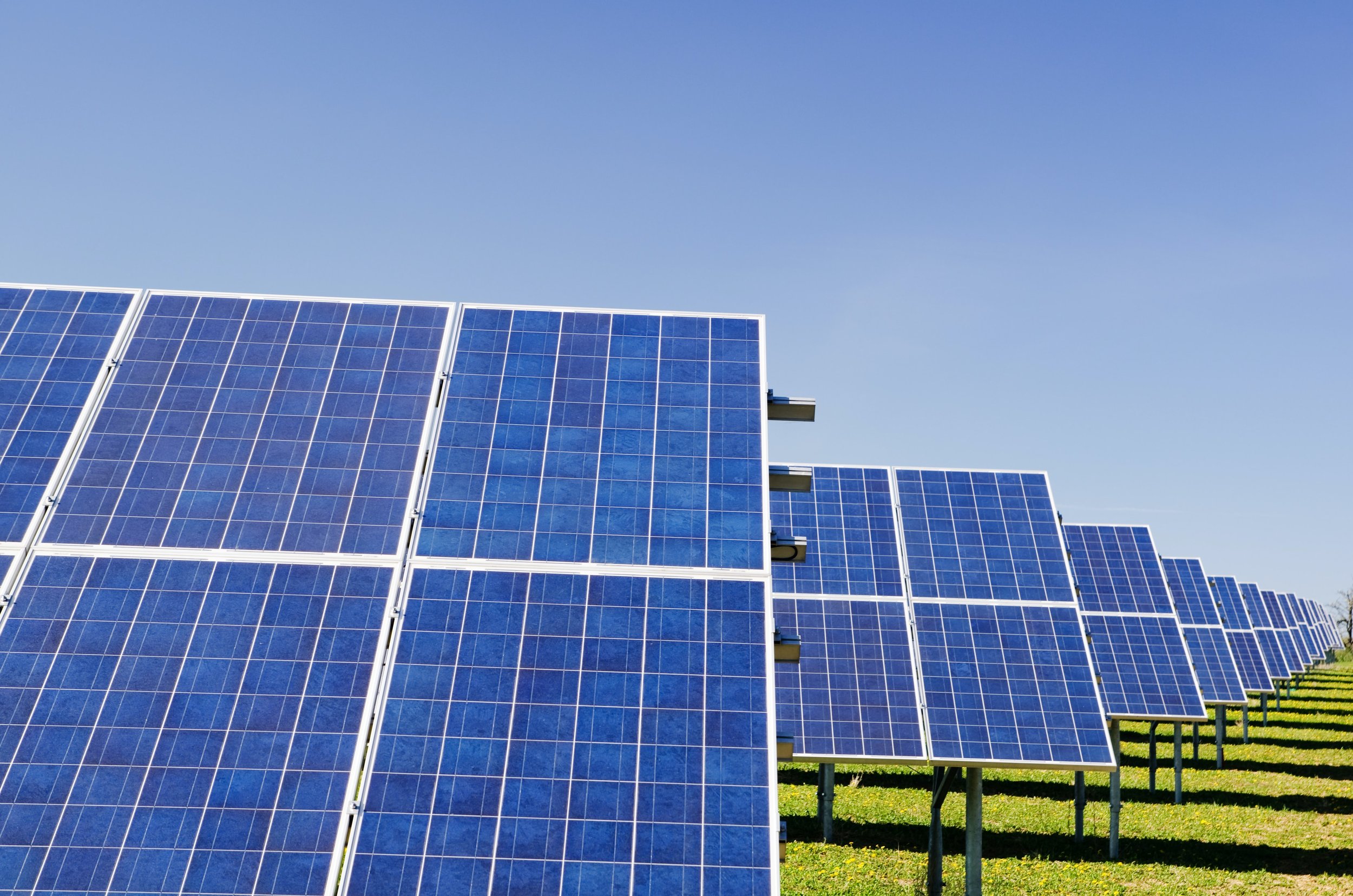
Renewable Energy
What Is Renewable Energy?
Renewable, or “clean”, energy is created using natural sources that can be replenished. Despite it being thought of as relatively new technology, it has been around for a long time, but it is being increasingly adopted to help tackle the global climate crisis.
Global climate change is having detrimental and visible effects on our planet, posing a threat to all those who inhabit it: glaciers are shrinking; sea ice is being lost; sea levels are rising; plant and animal ranges are shifting; and all countries are experiencing more frequent extreme weather events, such as heat waves and flooding. These are all a result of the exponential increases in greenhouse gas emissions being released into the atmosphere (see our other Environmental Calendar entries for more details on the reasons for this growth in emissions).
In 2015, 196 countries signed the Paris Agreement to limit global temperature increase to below 2, preferably 1.5 degrees Celsius. To achieve this, countries need to reach a global peak in greenhouse gas emissions and become a carbon neutral world by 2050. The adoption of renewable energy will be the single most important solution to doing so.
There are six main types of renewable energy:
Solar
Sunlight is abundant and free; in one hour, the solar energy received by the earth meets our planet’s energy needs for a whole year.
Hydro
Building a dam or barrier creates a large reservoir which can be used to create a controlled flow of water that will drive a turbine, generating electricity.
Geothermal
Harnesses the natural heat below the earth’s surface to create electricity or heat homes and is most widely used in volcanic geographies, e.g. Iceland.
Wind
Wind moves turbines, which drives generators, which then feeds electricity into the National Grid.
Tidal
A form of hydro energy using twice-daily tidal currents to drive turbine generators.
Biomass
Plant materials are converted into solid fuel to create electricity.
There are many advantages and disadvantages to each source of energy, which have been detailed in the table below. These will all be considered when stakeholders need to make a decision about which they should implement, but the key thing they all have in common is that they are renewable.
Global Renewable Energy Adoption
In order to achieve the targets outlined in the Paris Agreement, countries across the world are striving to become ‘carbon neutral’. As a result, renewable energy adoption has increased, with renewable energy sources making up 26% of today’s global electricity output. By 2024, this is expected to reach 30%. As outlined in the graphs below, the speed with which individual countries are adopting renewable energy varies significantly, but the trends are generally positive. Current forecasts suggest:
Up to 9% of global energy demand could be met using solar power by 2030.
By 2050, Africa could be powered on 100% renewable energy.
The cost of solar panels has declined by 99% in the last 40 years.
Renewable energy can create three times more jobs than fossil fuels.
Renewable energy investment has outpaced investment in fossil fuels; globally, the renewable energy market is now worth over $250 billion.

Our Tip
Turn off appliances instead of leaving them on standby - By turning off appliances at the plug you could save the equivalent of £30 a year in energy.
Renewable Energy In The UK
Renewable energy use in the UK has grown substantially in recent years. In 2020, generation of electricity using renewable energy sources (42%) outpaced fossil fuel generation for the first time, a trend that was only accelerated by the Covid-19 pandemic. The majority of the UK’s renewable energy is produced using wind power, with wind farms accounting for as much as a quarter of all electricity production. The UK Government is also striving to become world-leading in the generation of low-cost clean energy, vowing to power all homes using offshore wind by 2030.
The charts below illustrate how the UK compares to China in its renewable energy generation.

Our Tip
Use Energy Efficient Appliances. An A+++ fridge freezer could use around £320 less energy over its lifetime than an A+ one.
How You Can Help
Reducing Your Energy Consumption
There are several ways households can reduce the amount of energy they use. Here are some ideas to help you save energy in your home.
Turn off appliances instead of leaving them on standby - By turning off appliances at the plug you could save the equivalent of £30 a year in energy.
Use energy efficient appliances - When it comes to buying new appliances, look out for those which have a high energy-efficiency rating. For example, an A+++ washing machine could use around £65 less energy than an A+ over its lifetime, and an A+++ fridge freezer could use around £320 less energy over its lifetime than an A+ one.
Install a smart thermostat - You can make heating your home more efficient by only heating the rooms you are using. Using intelligent design, smart thermostats learn how long it takes to heat your home and they use this information to only switch on the heating when it is needed to keep rooms at certain temperatures, reducing the amount of energy used to heat your home.
Turn down your thermostat - Turning down your thermostat by just one degree can save you energy and around £80 a year.
Install a new boiler - If you don’t already have an A-rated condensing boiler with a programmer, room thermostat and thermostatic radiator controls, why not consider upgrading to one when you get the opportunity.
Install air source heat pumps - This system uses heat from the outside air to provide your home with heating and hot water. It works in a similar way to a fridge, but in reverse. It is clean and virtually silent, and could save you around £360 a year on heating bills compared to oil-fired systems.
Wash clothes at a lower temperature - By washing clothes at 30 degrees instead of 40, and reducing the number of washes you do a week, you can help cut your energy usage.
Install double or triple glazing - Double or triple glazing can help keep the warmth in and the cold out, reducing the amount of energy you need to heat your home.
Add draught proofing - Cold draughts can cause heat loss. By sealing up cracks in floors or around your letterbox you can help stop the heat escaping, reducing energy consumption.
Insulate your roof - This can help stop the heat escaping from your roof, and although it is an investment, can help reduce the amount of energy you use by hundreds of pounds a year.
Get a smart meter - By having a smart meter installed you can monitor your usage. It can help you learn about your energy usage, giving you the opportunity to become more efficient with your energy consumption.
Switch To A Renewable Energy Provider
By switching to renewable energies you can help reduce your carbon footprint. Renewables also help provide reliable power suppliers and fuel diversification, which enhance energy security, and conserve natural resources.
There are many renewable energy providers out there that can supply green energy to your home. Make sure you research the provider before switching to make sure you are getting the best deal for your circumstances.
Implement Renewable Energy Sources In Your Home
Solar panels derive clean energy from the sun. By installing solar panels you can help reduce our dependence on fossil fuels and help your home become energy independent. There are costs associated with having them installed, so make sure you do your research before installing them.
Wind turbines harness the power of the wind to generate electricity. There are two types of domestic wind turbines, pole mounted and building mounted. They can be expensive and do need regular maintenance, but do last for around 20 years, and as with solar panels, help reduce your carbon footprint and make your home more self-sustainable. Again, do your research to make sure this option is right for you.

Our Tip
Search for home improvement grants. In the UK you can apply for the Domestic Renewable Heat Incentive that could give you money towards renewable heating costs.
Useful Links & Further Information
Click the title below for further information.
-
Find out the best green energy suppliers in 2022 and how to switch to renewable energy.
-
A series of maps, charts and graphs that show renewable energy consumption and generation for each country.
-
What is the Paris Agreement? How does it work? How are we tracking progress? Full details are here from the United Nations Climate Change.
-
The Climate Action Tracker is an independent scientific analysis produced by two research organisations tracking climate action since 2009. They track progress towards the globally agreed aim of holding warming well below 2°C, and pursuing efforts to limit warming to 1.5°C.












